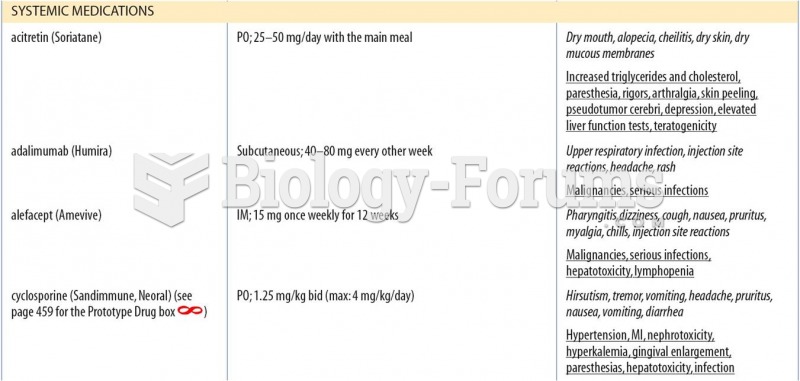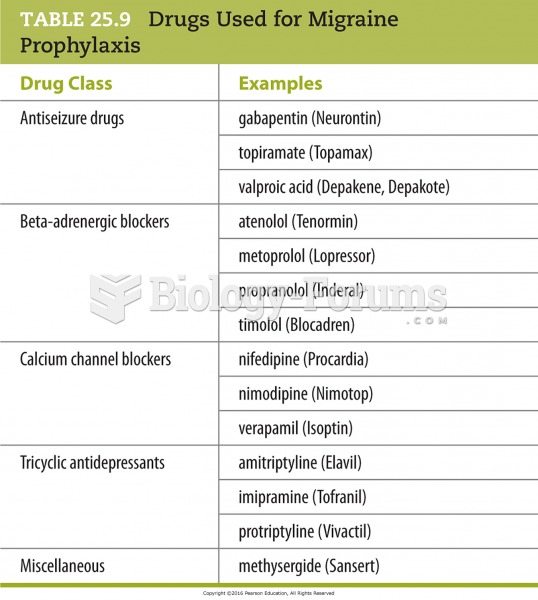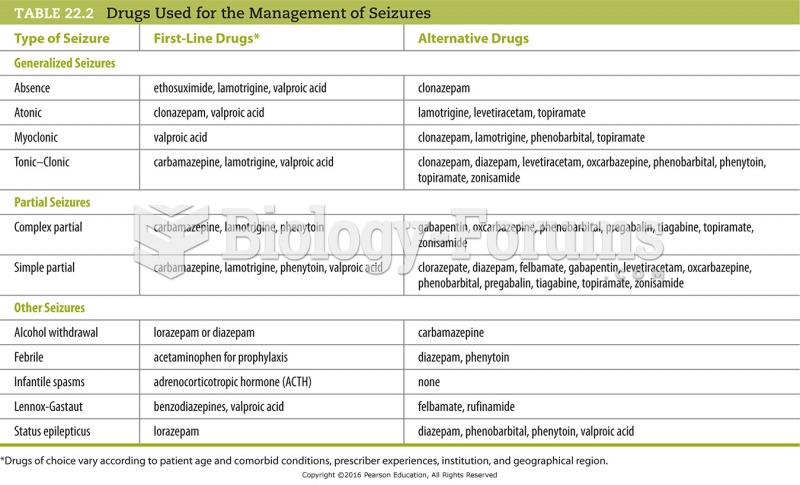|
|
|
Did you know?
There are 20 feet of blood vessels in each square inch of human skin.
Did you know?
The human body produces and destroys 15 million blood cells every second.
Did you know?
Medication errors are more common among seriously ill patients than with those with minor conditions.
Did you know?
The strongest synthetic topical retinoid drug available, tazarotene, is used to treat sun-damaged skin, acne, and psoriasis.
Did you know?
Every 10 seconds, a person in the United States goes to the emergency room complaining of head pain. About 1.2 million visits are for acute migraine attacks.







